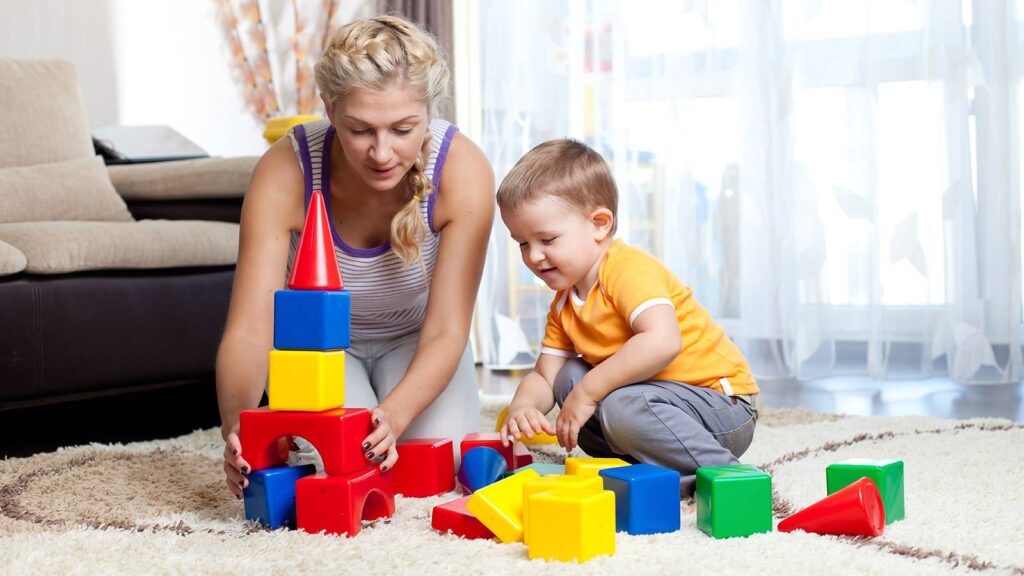One of the most important learning goals which you can implement in raising your creative child is helping your kid to tap into his or her imagination. Think about creativity like a place where no one else has ever been. We live in times that thrive on deadlines and productivity, so it is tough for many people to embrace their creative sides. For busy parents can be difficult to find time between their work and their regular life. But, this can be negative for their kids. They must find time to play and help their children to stay creative as much as they can.
There are different ways which can tell you if your child is creative, such as seeing your child daydreaming a lot; finding new ways of solving a problem, sometimes intuitively and without using logic; taking risks and learning from consequences; taking something existing, and makes his own improvements and variation on it, he may take an existing game and create his own variant, or an item such as a schoolbag and increase adornment to make it his own. When your child is creative, he or she will grow up to produce something very valuable in his generation.

How to raise a creative child?
Contents
- 1 How to raise a creative child?
- 1.1 Minimize screen time:
- 1.2 Get back to basics:
- 1.3 Trust the process:
- 1.4 Make it funny:
- 1.5 Praise your child as a creative person:
- 1.6 Set aside creativity time:
- 1.7 Make your child a reader:
- 1.8 Support their passions:
- 1.9 Be a role model:
- 1.10 Teach your child that it is okay to fail:
- 1.11 Help them hang in there:
- 1.12 Give your child limits:
- 1.13 Leave your child alone and do not set a lot of rules:
- 1.14 Be open-minded:
- 1.15 Get messy:
- 1.16 Talk about feelings and emotions with your child:
- 1.17 Reward your child for finishing a creative work:
If you think that there is a formula that can help you to raise a creative child, then you are wrong. There is plenty of advice from a lot of parents which can help you to achieve the goal you like. So, try these recommendations without fear if they will work for you for sure. There is nothing wrong. You just can help your child to be creative and fill his or her dreams.
Minimize screen time:
We know that in this modern era, we can have trouble with removing screen time altogether. But, we can all make an attempt to waste less time in front of the screen. The time that is spent watching videos or cartoons could be spent serving up playdough cupcakes, building a city out of blocks, and drawing.
Get back to basics:
Toys that flash and beep are fun. But, they do not build creative thinkers the way dolls, blocks, tubes, sticks, water, sand, and office supplies do. You should spend some time watching your child play and take a quick inventory of your toys. You will notice which toys your child plays with the most. You can notice which objects they pull into imaginative play. You can swap a close-ended toy (like blocks that will encourage free play).
Trust the process:
Some doctors have noticed that parents and kids can get too focused on the final result. You may think that you have to end up with a beautiful masterpiece, otherwise is a failure. You limit your thinking as well. For example, if your child is drawing a house, he or she may think that it has to have four walls and a rectangle roof. But, tell your child, and tell yourself too, that there are no limits.
You can search for different types of houses all across the world. You can take different pictures from houses and your child will see that are thousands of interiors. So, if you find beauty in the process, like drawing houses, your kid and you will have more fun and his or her creativity will be increased.
Make it funny:
If you have a good sense of humor, then you have already skilled at looking at things in alternative ways. It is a hallmark of divergent thinking. Humor can help kids to practice thinking outside the box in fun ways. When kids get a giggle from others, then their inspiration is immediately rewarded. Jokes and riddles can get kids in the many–answer modes. You should set up a round of puzzles during that next quiet carpool.
Praise your child as a creative person:
You should praise your child as much as his work. This will give your child a sense of self that is creative.
Set aside creativity time:
This can be very hard, especially for parents who are constantly working. But, children need time to explore, experiment, build and imagine. It can be an hour of imaginative play every weekend. It can be drawing in bed before reading a book or it could be half an hour after dinner. You should look at your schedule and make sure that there is time to set aside for this.
Make your child a reader:
Reading has many benefits. It expands the intellectual horizon of your child, exposing him to new information and experience which could potentially capture his interest, drive his passion and stimulate the urge to create. It can help your child to think more creatively. Also, knowledge from reading provides raw materials for your child to build upon. Reading will inform your child what exists, so he or she will know how to build on it.
Support their passions:
Some doctors notice that the big creative achievements in life, such as a groundbreaking theory about how to fix global warming or a new concerto, need a long direction in which you develop an extent of skills from which to build. You need a passion to fuel this persistence. Many studies are shown that sustained creativity comes from intrinsic motivation. This is happening when you get the real pleasure out of doing something.
You should expose your child to lots of pursuits, such as programming, baller, or other things, to see if he or she finds something that makes her catch fire. If your child falls in love with robotics or oboe, then find ways to encourage his or her enthusiasm. Your child may discover a passion that will change his or her life.
Be a role model:
You should let your child see you as a parent who creates fun and have fun doing it. You should show him what you have accomplished. You should let your child know that you are appreciating thinking freely, being a risk-taker, and being adventurous.
Teach your child that it is okay to fail:
When your child has a fear of failure, then it can paralyze him or her from taking a step to make his idea into reality. You should tell your child that failure is not a permanent state. It is a part of a process that eventually leads to success. You should encourage your child to rise up and recover after falling. You should teach your child the importance of learning from failure.
Help them hang in there:
When you figure out a problem or make something new, it takes stamina. You should show your kids that you value their efforts. Often, children think that they are done with a piece of art in two seconds. But, you can ask your child about the process. For example, you can say that you have noticed that your child has used the green marker, so you are curious about which color will be next. You can ask your child what will happen if you add tissue paper. Your interest will encourage him or her to keep doing and that is what builds the muscle of creativity.
Give your child limits:
Creativity is about letting imagination and creativity run wild. But, the reality is being creative is usually constrained by limits and structures. For example, a TV show is usually an hour long and has a limited budget. The less your child has, the more creative he or she becomes. If you give your child limited resources, then he or she will learn early that creativity thrives with limits.
Leave your child alone and do not set a lot of rules:
Some doctors say that if you want to make your child creative, then you should limit rules and let your children think about themselves. Also, it is noticed that parents of highly creative children give their children an average of less than one rule like when it is time for homework or bed, compared to parents of traditional children who had a moderate of six rules. You should teach your child values instead of rules.
Be open-minded:
If you want to encourage independent thinking, then offer your child choices. You may do not want to eat things for dinner as breakfast. But, if your child wants to eat pasta before he goes to school, then make time for it. If your child wants to help you with the kitchen, then you should give him or her open access to a handful of ingredients and kitchen tools.
Get messy:
Most people want to be clean rooms and feel overwhelmed when it is messy around. But, when your child is in his creative element, then messes can quickly develop. When your child wants to dump a bag of cotton balls all over the floor or your child asks to paint, then make a room for it. You may do not want to have a mess, but on the other hand, the creativity in your child will be increased.
Talk about feelings and emotions with your child:
They can help your child with artistic work.
Reward your child for finishing a creative work:
You can buy his short story or his last painting.




